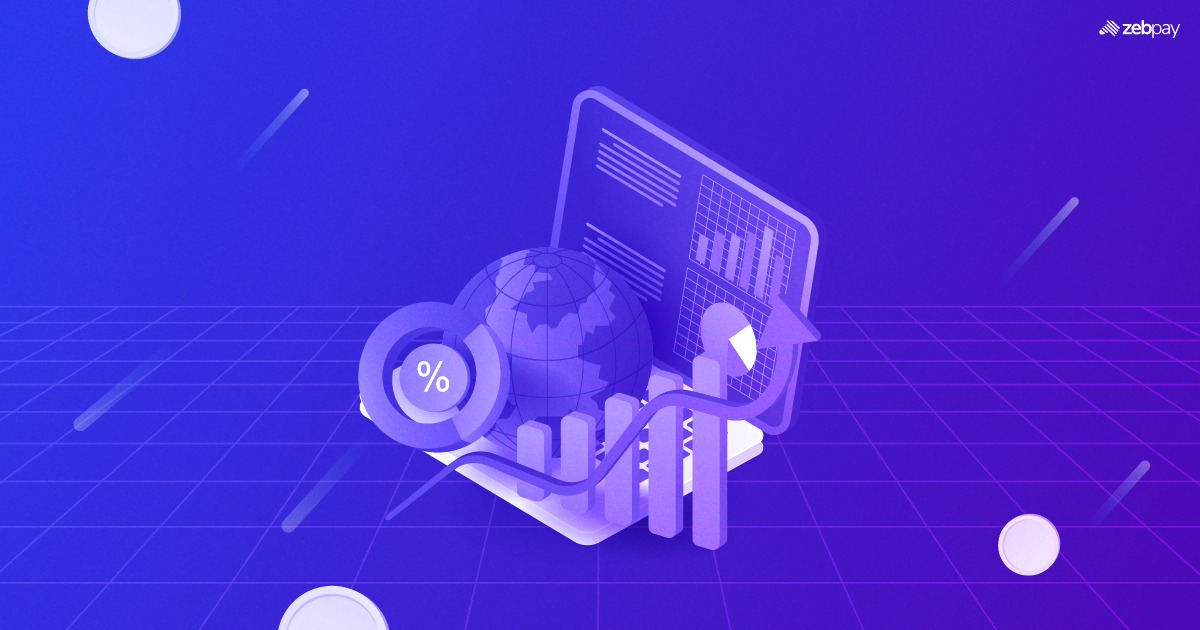Crypto trading mixes advanced technology and money markets. This blend led to predictive analytics. We’ll explore how predictive analytics can aid your crypto trading. It fundamentally alters decision-making, strategy crafting, and performance enhancement in this space.
What is Predictive Analytics in Crypto Trading?
Predictive analysis is a vital method used in crypto trading. It involves looking at previous data patterns and using statistics to try and predict what will happen in the future. This approach helps traders make better choices. Crypto markets are relatively volatile, so regular trading tactics don’t always work well. Predictive analysis provides a structured way to examine past behaviours in the market. It helps traders spot patterns and feel more confident about predicting upcoming price shifts.
Read more: Crypto Investing vs Crypto Trading
When traders use predictive analysis to understand crypto trends, they gain valuable insights. These insights allow them to anticipate price movements more accurately. They can then identify the best times to enter or exit trades. Having this strategic advantage is extremely useful in the crypto market. It enhances trade execution and increases the potential for higher profits.
The Role of Data in Crypto Trading
In crypto trading, data plays a crucial role, as research and market analysis heavily rely on it. Without data, conducting analysis would be nearly impossible. Data forms the core of any crypto trading system, employing various analyses to make unbiased and informed decisions. Typically, quantitative methods help in meeting the vast amount of historical price data, which serves as the foundation for most analytical models and strategies, offering valuable insights into a crypto asset’s past performance trends.
Real-time data, encompassing both price and volume information, is vital for executing trades based on the latest market data, ensuring that your crypto trading strategy remains flexible and up to date. Order book data, which details all active buy and sell orders for a particular crypto, aids in understanding the market depth and predicting short-term price movements. Additionally, in the highly interconnected realm of crypto, market sentiment can be significantly influenced by news and social media activities. It’s not uncommon for traders to draw parallels between trends on platforms like Twitter and fluctuations in crypto prices.
Key Concepts in Predictive Analytics
Regression Analysis
This is the most commonly utilized model in predictive analysis and is particularly effective for identifying patterns in extensive data sets where a linear relationship exists among the inputs. Use this approach when you need to find patterns and relationships among variables. The method involves establishing a formula that encapsulates the relationship between all inputs in the dataset.
Time Series Forecasting
Data is associated with time, and certain predictive analytics depend on understanding the correlation between cause and effect over time intervals. These models examine inputs at set intervals, like daily, weekly, or monthly cycles. Subsequently, analytical models can identify recurring patterns, trends, or behavioural tendencies based on temporal relationships. This predictive model type proves valuable in cases such as anticipating spikes in sales at specific times and forecasting peak customer service demands.
Read More: What is a Candlestick Pattern
Machine Learning Algorithms
Machine learning is a way to make predictions from data. It uses math and analysis to build models. Models are formulas that forecast the future. Predictive analytics is a larger superset of machine learning. Analytics uses those models to predict events. Machine learning creates those models. Predictive analytics puts them to use.
How does predictive analytics work for forecasting crypto trading?
A powerful predictive analytics tool can assess numerous cryptos, creating a tailored selection of investment options aligned with specific investment goals, expected returns, and risk tolerance. This enables investors to swiftly decide where to invest. Recognizing market trends and patterns is crucial for success in crypto trading. Real-time data analytics can utilize chart patterns and trends to provide timely insights for making more informed investment decisions.
New investors are often at risk of making incorrect investment choices due to misleading information. Predictive analytics serves as a safeguard against such pitfalls, helping investors avoid being misled. These analytics tools also aid in identifying potential investment risks by analyzing a multitude of factors to quickly forecast which crypto asset may offer superior returns. This allows investors to optimize their crypto portfolios based on these insights.
Read more: Crypto Options Trading With Technical Analysis
How Do You Use Predictive Analytics for Crypto Trading?
Forecasting
When using predictive analytics for anticipating market trends, algorithms delve into various parameters like market indicators, historical pricing data, and pertinent information. These algorithms sift through vast datasets to unveil patterns and correlations, offering traders insights into potential crypto price shifts. For instance, machine learning models can detect recurring patterns on price charts, such as support and resistance levels, aiding in forecasting whether crypto is likely to experience an upward or downward trend soon.
Predicting Crypto Prices
Crypto traders use predictive analytics to forecast crypto values for different periods. These models analyze trade volume, market sentiment, and events to predict prices. Their forecasts help traders understand potential price changes and adjust strategies based on anticipated trends.
Minimizing Trading Risks
Crypto markets are volatile, so risk management is crucial. Predictive analytics helps traders predict market moves and assess the likelihood of unfavourable outcomes. Models analyze historical data and volatility indicators to evaluate risks for strategies. This enables traders to reduce losses and protect capital by adjusting portfolios, setting stop-loss orders, and hedging.
Benefits of Predictive Analytics for Forecasting Crypto Trading
- Enhanced Investment Approaches: Predictive analytics helps investors make good decisions and lower risks when trading crypto. Predictive analytics delivers data-driven predictions for smarter investing approaches.
- Strengthened Security: Blockchain secures data integrity, preventing tampering. Predictive analytics integrates with blockchain for strengthened security. This builds confidence in the predictive analysis process.
- Immediate Data Insights: Machine learning swiftly examines big data for real-time foresight. Algorithms rapidly analyze large datasets, offering immediate predictions. This allows crypto traders to capitalize on time-sensitive market opportunities.
Conclusion
Using past data records, machine-learning systems can predict future market conditions. They analyze patterns and trends in this history. With their forecasts, investors and traders can take smart actions. Now merge blockchain’s transparent, strong security features into this. This makes prediction tools very reliable for crypto trading. Together, these technologies can transform how we navigate crypto markets. However, it is important to note that this blog is based on internal research and should not considered investment advice. Investors should conduct thorough research before investing in any crypto-related asset.
If you found this blog to be useful, do share it with other like-minded crypto enthusiasts. Click on the button below to begin your crypto trading journey using ZebPay.







